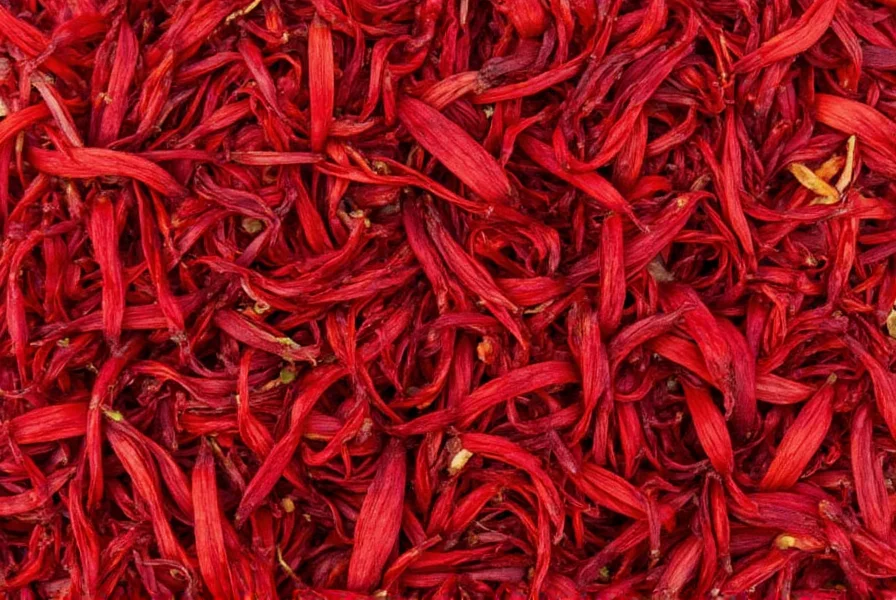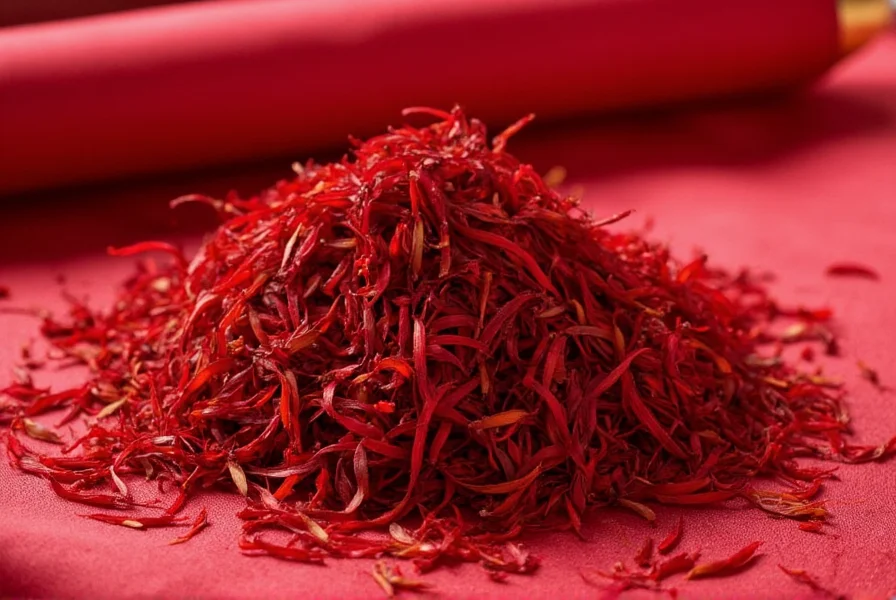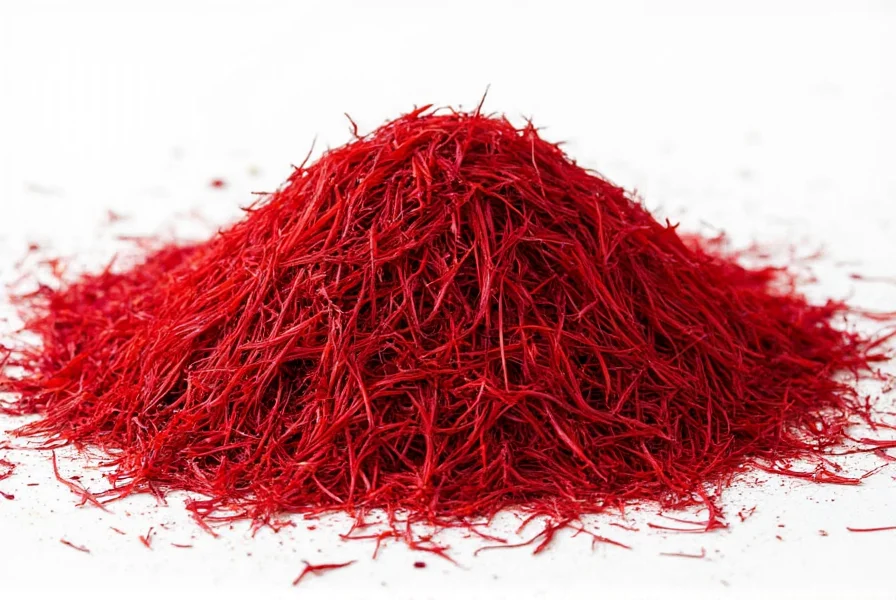As the world's most expensive spice by weight, saffron's price reflects its labor-intensive harvesting process. Each crocus flower produces just three delicate stigmas that must be hand-picked at dawn when the blooms first open. It takes approximately 75,000 flowers to yield a single pound of saffron, explaining why this vibrant red spice commands such premium pricing.
Factors That Determine Saffron Pricing
Several critical elements influence how much saffron costs in today's market:
Quality Grade (ISO 3632 Classification)
The international standard ISO 3632 categorizes saffron into four quality tiers based on crocin (color), picrocrocin (taste), and safranal (aroma) content. Higher-grade saffron delivers more potent flavor and color with less quantity needed in recipes, justifying its premium price.
Geographical Origin
Iran produces about 90% of the world's saffron and generally offers the most competitive pricing. Spanish saffron (particularly La Mancha variety) commands higher prices due to branding, while Kashmiri saffron fetches premium rates for its exceptional quality and limited production.
Form: Threads vs Powder
Whole saffron threads typically cost 20-30% more than powdered saffron. Threads maintain potency longer and are less prone to adulteration, making them preferable for serious culinary applications despite the higher saffron cost per ounce.
Purity and Certification
Certified organic saffron and products with third-party purity verification (like ISO or USDA Organic) carry 15-25% price premiums. Adulteration remains common in the saffron market, with lower-priced options often containing fillers like safflower or turmeric.
| Saffron Quality Grade | Price Per Gram | Price Per Ounce | Price Per Pound | Color Strength (Min) |
|---|---|---|---|---|
| Coupe (Grade I) | $10-$15 | $280-$420 | $4,500-$6,700 | 190 |
| Mancha (Grade II) | $7-$10 | $195-$280 | $3,100-$4,500 | 150 |
| Rio (Grade III) | $5-$7 | $140-$195 | $2,200-$3,100 | 110 |
| Standard (Grade IV) | $3-$5 | $85-$140 | $1,400-$2,200 | 80 |
Understanding Saffron Grading and Value
The ISO 3632 standard measures saffron quality through laboratory analysis of three key compounds. Crocin determines coloring strength (measured as absorbance at 440nm), picrocrocin affects taste intensity (257nm), and safranal contributes to aroma (330nm). Higher numbers in these measurements indicate superior quality saffron that justifies the higher cost per gram.
When evaluating whether expensive saffron is worth the investment, consider that premium-grade saffron requires less quantity to achieve the same flavor and color impact. A single gram of Grade I saffron may deliver equivalent results to 1.5 grams of Grade III, potentially making the higher-priced option more economical in the long run for frequent users.

Where to Buy Saffron at Reasonable Prices
Purchasing directly from reputable specialty spice retailers typically offers the best value for how much saffron costs. Online marketplaces often feature suspiciously low prices that frequently indicate adulterated product. Consider these purchasing guidelines:
- Avoid prices below $3 per gram - these almost always indicate diluted or fake saffron
- Look for transparent sourcing information - legitimate sellers disclose country of origin and harvest year
- Choose small quantities - saffron degrades over time, so buying more than you'll use in 6 months represents poor value
- Check for certification - ISO 3632, USDA Organic, or EU Organic labels provide quality assurance
Spotting Overpriced or Fake Saffron
Unfortunately, saffron adulteration remains widespread in the global market. When evaluating potential purchases, watch for these red flags that indicate you might be paying too much for inferior product:
- Uniformly dark red threads - authentic saffron has red stigmas with orange tips
- Excessive weight - pure saffron feels extremely light; heavier packages may contain fillers
- Instant color release in water - real saffron gradually releases color over 15-20 minutes
- No floral aroma - genuine saffron has a distinctive honey-like fragrance
A simple water test can verify authenticity: place a few threads in warm water. Authentic saffron will slowly release a golden-yellow hue over several minutes, while fake saffron (often made with safflower or dyed corn silk) will immediately turn the water bright red.
Historical Price Trends and Future Outlook
Saffron prices have increased approximately 40% over the past decade due to climate challenges affecting production regions and growing global demand. Iranian saffron remains the most affordable option, though geopolitical factors occasionally cause price volatility. Spanish producers have successfully marketed their saffron at premium prices through geographical indication protection, while Kashmiri saffron commands the highest prices due to exceptional quality and limited annual production of just 10-15 tons.
Looking forward, sustainable farming practices and improved processing techniques may help stabilize saffron cost per ounce, though this precious spice will likely maintain its position as the world's most expensive culinary ingredient due to the inherently labor-intensive harvesting process.

Practical Buying Tips for Saffron Shoppers
When determining how much you should pay for saffron, consider these practical guidelines:
- Calculate cost per use - high-quality saffron requires less quantity per recipe, potentially offering better long-term value
- Buy whole threads - they maintain freshness longer and are less prone to adulteration than powder
- Store properly - keep saffron in an airtight container away from light to preserve potency for up to 2 years
- Start small - purchase 0.5-1 gram samples before committing to larger quantities
- Check harvest date - fresher saffron (within 12-18 months) delivers superior flavor and color
Frequently Asked Questions
Why is saffron so expensive compared to other spices?
Saffron's high cost stems from its extremely labor-intensive harvesting process. Each crocus flower produces only three stigmas that must be hand-picked at dawn. It takes approximately 75,000 flowers to yield just one pound of saffron, making it the world's most expensive spice by weight.
How much saffron should I expect to pay for good quality?
For high-quality saffron (ISO Grade I or II), expect to pay $7-$15 per gram, $195-$420 per ounce, or $3,100-$6,700 per pound. Prices below $5 per gram often indicate lower quality or adulterated product.
Is expensive saffron worth the higher price?
Premium saffron often provides better value despite the higher upfront cost. Higher-grade saffron delivers more potent flavor and color, requiring less quantity per use. A single gram of Grade I saffron may equal 1.5 grams of lower-grade product, potentially making it more economical for regular users.
How can I tell if saffron is real or fake?
Authentic saffron has red stigmas with orange tips, feels extremely light, and releases golden-yellow color gradually in warm water over 15-20 minutes. Fake saffron often appears uniformly dark red, feels heavier, and immediately turns water bright red. Real saffron also has a distinctive honey-like floral aroma.
How much saffron do I need for a typical recipe?
Most recipes require just 0.1-0.2 grams (about 15-25 threads) to properly flavor and color a dish serving 4-6 people. A single gram of saffron can season 5-10 recipes, making even premium-priced saffron relatively affordable per use when purchased in small quantities.











 浙公网安备
33010002000092号
浙公网安备
33010002000092号 浙B2-20120091-4
浙B2-20120091-4